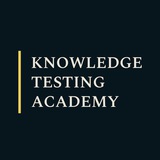The cardiac glycosides (DIGOXIN and DIGITOXIN) improve myocardial contractility. They inhibit Na+–K+–ATPase.
Digoxin has a shorter half-life, no (the ultimate fewer) metabolites, is less completely absorbed from the GI tract, and is less protein bound than digitoxin.
DOBUTAMINE is a β1 agonist. At moderate doses it increases contractility of the heart without changing blood pressure or heart rate.
ADENOSINE is highly effective in terminating paroxysmal supraventricular tachycardia.
DIGOXIN is used to control the ventricular rate in atrial fibrillation or flutter.
Drugs that can be used to increase heart rate include ATROPINE, ISOPROTERENOL, and EPINEPHRINE.
Nonsteroidal anti-inflammatory drugs (NSAIDs), including aspirin, inhibit platelet aggregation and prolong bleeding time.
Platelet glycoprotein IIb/IIIa receptor antagonists prevent platelet aggregation by blocking the binding of fibrinogen and von Willebrand factor to the glycoprotein IIb/IIIa receptor on the surface of the platelet.
HEPARIN interferes with clotting factor activation in both the intrinsic and extrinsic pathway.
PROTAMINE is a specific heparin antagonist that can be used to treat heparin-induced hemorrhage.
Administration of vitamin K can overcome the anticoagulant effects of the oral agents, but the effect takes about 24 hours.
Anticoagulant and antiplatelet drugs are administered to prevent the formation or extension of clots. Thrombolytic drugs are used to lyse already formed clots.
Clot dissolution and reperfusion are more likely if therapy is initiated early after clot formation. Clots become more difficult to lyse as they age.
